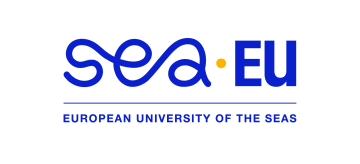
M. Lega is Professor at Dept. of Engineering - Univ. of Naples Parthenope.
The very first salient stages of technical/scientific educational training of M. Lega are summarized below: Master Degree in aerospace engineering, qualification to the profession of engineer, Ph.D in Aerospace Engineering, research grant/post-doc. The post-graduate research /training activity (Post-Doc fellows and research fellows) was spent in national and international context at prestigious universities and research institutions.
Since 2005, research topics and teaching subjects have consolidated and formalized the affiliation to SSD ICAR/03 (labelled in Italy "Sanitary and Environmental Engineering") as shown by both the scientific production and Univ. qualifications, achieved over time: teaching assistant/expert in "Sanitary and Environmental Engineering", Researcher, Adjunct professor, National Scientific Qualification (ASN), Associate Professor.
His research activity is focused on: study of pollution phenomena and dynamics of pollutants in environmental systems, analysis and environmental impact assessment studies, development of plans and projects for monitoring, characterization and protection of the soil, water and air components and ecosystems. Furthermore, the scientific activity addresses, with multidisciplinary approaches, also issues related to complex environmental systems, focusing on the formulation and experimental validation of studies on ecological alterations, on the dispersion of pollutants, on ecotoxicology, on environmental impact and risk. On a scientific level, the use of a multidisciplinary approach has also favored the accentuation of the "bridge" function of Environmental Engineering, allowing to extend the potential of what has been developed to other scientific sectors such as agriculture, zoology, pharmacy, medicine, radiation protection etc.
Finally, the interest shown by government bodies, law enforcement agencies and judicial authorities in the effectiveness and public utility of the particular experimental and operational approach, represented a new stimulus for the parallel development of a further line of recognized research activity from the international scientific community such as “Environmental Forensic”.
Public Engagement and External Leadership
Of particular importance are the further institutional activities carried out for the Italian Ministry of the Environment and the Protection of the Territory and the Sea (MATTM) at the Direct Collaboration Offices of the Minister, evidenced by the awarding of the following prestigious government offices:
- SCIENTIFIC ADVISER OF THE MINISTER;
- HEAD OF THE PARTICULAR / TECHNICAL SECRETARIAT OF THE UNDER-SECRETARY OF STATE.
Furthermore, it should be noted that the implementation of new methods and technologies, the result of scientific research, has contributed to enriching the procedural and technological potential in the fight against environmental crimes, leading to a constant and intense inter-institutional cooperation, confirmed both from the definition of memorandum of understanding with Government Bodies, State Police Bodies and Forces, and from the direct assignment of Technical Consultancy tasks to the Public Prosecutor's Office and/or as an Auxiliary of the Judicial Police. In particular, the support activity for environmental investigations has been validated over the years in various "environmental police" actions showing particular effectiveness, also evidenced by a commendation from the Public Prosecutor's Office. In particular, excerpts from the text of the latter are cited below: "Your commitment, of the highest scientific and moral importance, to the service of justice ... The results achieved, thanks to your always prompt and attentive collaboration, constitute a concrete testimony of the new open frontiers from environmental engineering to criminal investigation... Nor should we neglect to underline the important contribution you offered also in the sector of inter-institutional communication, during the numerous hearings before the parliamentary bodies in which you participated ”.
Lega, M.; Medio, G.; Endreny, T.; Esposito, G.; Costantino, V.; Teta, R. ATTRIBUTION OF POLLUTION DISCHARGES IN COASTAL WATERS DURING THE COVID-19 LOCKDOWN USING REMOTE SENSING AND BIOINDICATORS. WIT Transactions on Ecology and the Environment 2022, 257 (2022), 177–186. https://doi.org/10.2495/WMEI220151.
Teta,R.;Sala,G.D.;Esposito,G.;Stornaiuolo,M.;Scarpato,S.;Casazza,M.;Anastasio,A.;Lega,M.;Costantino, V. Monitoring Cyanobacterial Blooms during the COVID-19 Pandemic in Campania, Italy: The Case of Lake Avernus. Toxins 2021, 13 (7). https://doi.org/10.3390/toxins13070471.
Esposito, G.; Teta, R.; Marrone, R.; De Sterlich, C.; Casazza, M.; Anastasio, A.; Lega, M.; Costantino, V. A Fast Detection Strategy for Cyanobacterial Blooms and Associated Cyanotoxins (FDSCC) Reveals the Occurrence of
Lyngbyatoxin A in Campania (South https://doi.org/10.1016/j.chemosphere.2019.02.201.
Italy). Chemosphere 2019, 225, 342–351.
Teta, R.; Romano, V.; Della Sala, G.; Picchio, S.; De Sterlich, C.; Mangoni, A.; Di Tullio, G.; Costantino, V.; Lega, M. Cyanobacteria as Indicators of Water Quality in Campania Coasts, Italy: A Monitoring Strategy Combining Remote/Proximal Sensing and in Situ Data. Environmental Research Letters 2017, 12 (2). https://doi.org/10.1088/1748-9326/aa5649.
Errico, A.; Angelino, C. V.; Cicala, L.; Persechino, G.; Ferrara, C.; Lega, M.; Vallario, A.; Parente, C.; Masi, G.; Gaetano, R.; Scarpa, G.; Amitrano, D.; Ruello, G.; Verdoliva, L.; Poggi, G. Detection of Environmental Hazards through the Feature-Based Fusion of Optical and SAR Data: A Case Study in Southern Italy. International Journal of Remote Sensing 2015, 36 (13), 3345–3367. https://doi.org/10.1080/01431161.2015.1054960.
